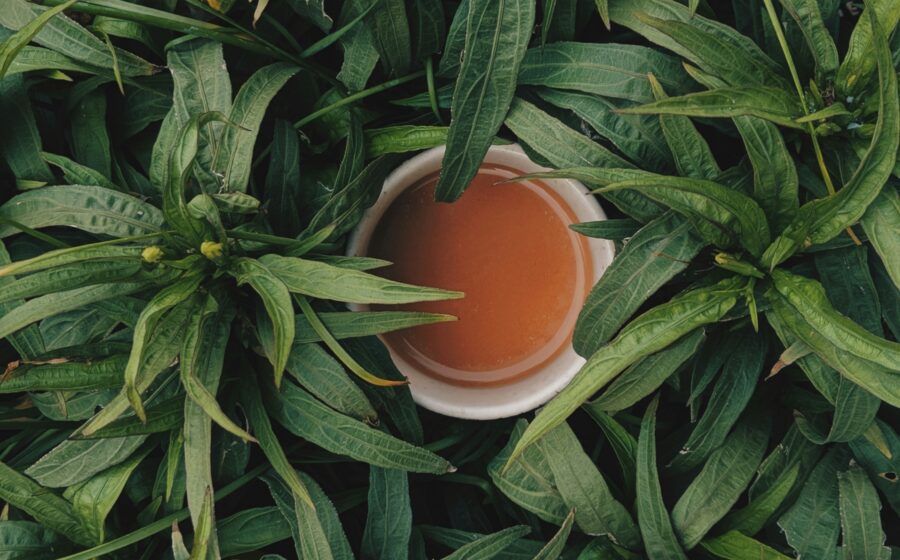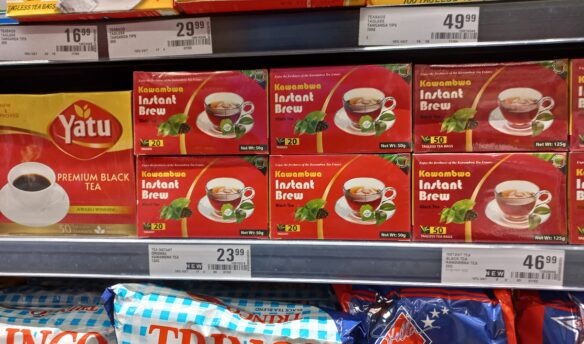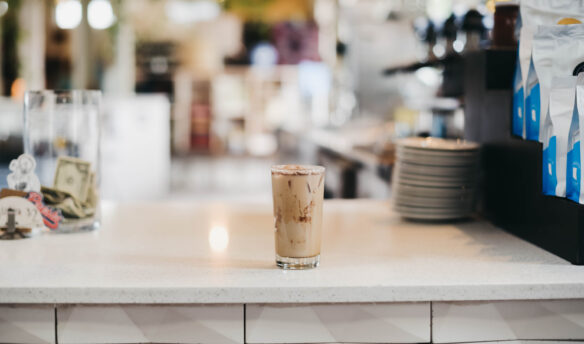In early 2024, the Intergovernmental Group on Tea floated the idea of promoting tea as a source of wellbeing. The group, an arm of the United Nations’ Food and Agriculture Organization, was responding to dwindling demand: despite being the second-most consumed beverage in the world after water, the demand for tea has not kept pace with supply in recent years. Designing a campaign around tea’s health benefits, the group hoped, would attract a younger generation of health-conscious consumers and stimulate demand.
In India, the second-largest producer and fourth-largest consumer of tea worldwide, no one needs much convincing when it comes to tea. Seventy-two percent of Indians drink tea regularly, especially chai, a concoction of black tea leaves boiled with water, milk, sugar, and occasionally spices.
While the Intergovernmental Group is looking to capitalize on tea’s purported health benefits, chai, with its generous doses of milk and sugar, may not quite cut it. At the other end of the Indian tea market are premium leaf teas that are enjoyed plain for their delicate flavor and aroma. However, at 60–100 rupees ($0.72–$1.20 USD) a cup, they are expensive for many Indian consumers.
Between the cheaper black tea blends used for chai and expensive premium teas is an untapped market for mid-range products that Indian retailers are trying to fill with herbal teas and tisanes (although the terms are often used interchangeably and both usually have herbs, flowers, roots, barks, fruits and/or spices, herbal teas have tea leaves; tisanes don’t.) Companies are hoping these alternatives, priced higher than black tea blends but lower than premium leaf teas, will allow them to tap into a different, if not new, consumer base.
Testing Chai Lovers’ Loyalties with Herbal Tea
India-based online retailer Teabox sells teas to consumers in about 120 countries. They’ve offered herbal and tisane options since their launch in 2012, but over time, have expanded their herbal options: “In 2019, we launched a pure chamomile and other herbal teas, and, since then, have been consistently adding to this collection,” says Prachi Jain, Teabox’s co-founder and brand director.
While Teabox’s offerings respond to a gap in the tea market, they are also driven by “a growing consumer interest in herbal and natural products due to their perceived health benefits,” Jain says. “So far, herbal tea is a small segment for Teabox, but we are seeing this category slowly growing and many first-time herbal tea consumers returning to buy the same products.”
For Tea Trunk, an online tea company founded in 2013, herbal teas and tisanes are more recent offerings. “As soon as the pandemic hit, the number one question we got from our customers was, ‘Which tea can help me sleep better?’” says founder Snigdha Manchandana. During the height of the pandemic, she says, people were drinking multiple cups of tea a day and were concerned about consuming too much caffeine.
So far, herbal tea is a small segment for Teabox, but we are seeing this category slowly growing and many first-time herbal tea consumers returning to buy the same products. Prachi Jain, teabox
Tea Trunk’s botanicals collection was primarily driven by consumers looking for caffeine-free blends. The company started with a few calming teas such as chamomile, lavender and rose before adding lesser-known tisanes like blue pea flower and chaga mushroom teas to its repertoire.
To an extent, the emerging demand for alternative non-caffeinated herbal teas and tisanes in India can be seen as part of the growing wellness trend in the global food and beverages industry, says Jain. Think of the worldwide embrace of turmeric lattes, ashwagandha, probiotics, and fermented foods and beverages. Herbal teas, with ingredients like nettle, spearmint, and hibiscus which are linked to anti-inflammatory, hormone-balancing, and antioxidant properties fall squarely within this trend.
The other likely factor is Indian consumers’ familiarity with medicinal home brews linked with Ayurveda, naturopathy, and indigenous ways of healing. Incorporating herbs and spices like ginger, turmeric, and tulsi (holy basil), these traditional drinks (called kadhas) were a version of contemporary herbal teas and tisanes.
And certain parts of India have always had alternatives to chai, like Kashmiri Kahwa and Rakhal tea, which are made by brewing tea leaves, herbs, spices, and sometimes nuts in hot water. Manchandana says knowledge of and exposure to traditional drinks make even the staunchest chai lovers willing to try out herbal teas.
Demand is also being driven by restaurants, bars and cafes, says Manchandana. Tea Trunk sells herbal teas and tisanes to about 250 such establishments across the country. Some find creative ways to play with tea, using Tea Trunk’s offerings in cocktails, mocktails, iced teas, and baked goods.
Similarly, many hotels stock caffeine-free teas, especially in spas where people might want more relaxing (and non-caffeinated) options, says Anamika Singh, founder and director of Anandini Himalaya Tea and a second-generation tea sommelier. “Because we work closely with hotels and restaurants, they absorb a larger chunk of what we offer, both in terms of herbal as well as single estate premium teas. The restaurants and mixologists we work with love tisanes because they offer a whole range of flavors and aromas.”
An Opportunity for Diversification
This wide-ranging interest in herbal teas and tisanes comes at a time when the Indian tea industry is grappling with declining yields due to rising temperatures, longer droughts, and unseasonal rains linked with climate change.
For example, Darjeeling tea production fell from 11-12 million kilograms in the 1990s to seven million kilograms in 2021 due to climate fluctuations and aging trees. Amid these challenges, herbal teas and tisanes present an opportunity for diversification. “There is great pressure on single estate tea gardens to produce the same high-quality tea year after year. By focusing on creating different flavor profiles and blends through the use of botanicals, we try to take that edge off,” Manchandana says.
As soon as the pandemic hit, the number one question we got from our customers was, ‘Which tea can help me sleep better?'” Snigdha Manchandana, tea trunk
Diversification can also increase profitability for growers. “Especially if they are marketed as premium or organic products, herbal teas can command higher prices compared to the tea blends used for chai,” Jain points out.
That said, herbal teas and tisanes still represent a small fraction of the overall tea market in India. “Well-established tea estates who retail their own blends may throw a few tisanes into the mix because there is demand for these products, but their focus will always remain tea,” says Singh.
Even for retailers like Teabox and Tea Trunk, the herbal and tisanes category, while growing and commanding a loyal customer base, is still not a significant one. “From a sales figure perspective, tisane is at the lowest in comparison to black teas, green teas, and white teas,” says Jain. She also says that consumers are still loyal to chai and tend to be price-sensitive: chai is generally cheaper than herbal tea. “While a cup of chai comes under 10 rupees, a cup of tisane is around 25 rupees.”
Jain is nevertheless optimistic that consumers’ affinity for herbal teas and tisanes will grow. “While loyalty for chai is strong in India, the need to be healthy is strong too,” she says. She notes that people are increasingly incorporating tisanes into their tea habits. “We know of consumers who in the morning have a cup of chai and, by afternoon, a hibiscus tisane or a pure camomille tisane.”
Manchandana has been pleasantly surprised that most of Tea Trunk’s first-time customers opt for herbal teas. That might be because Tea Trunk’s selection of herbal teas comes in at a slightly lower price point than the brand’s green teas (which make up most of Tea Trunk’s tea catalog). But she believes there’s untapped potential in India’s herbal and tisane market. “People are using it in so many different forms—baking, cocktails, skincare, cooking. In that sense, it’s a trend that people are still discovering. But there is more room for this trend to grow.”
Cover photo by Aniketh Kanukurthi.















